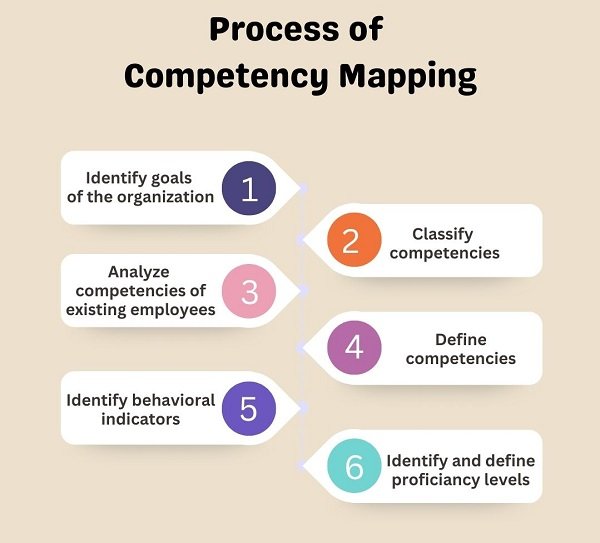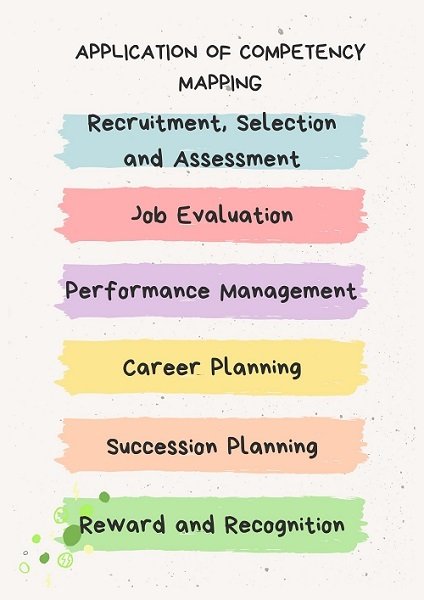Definition: Competency Mapping refers to identifying the knowledge, skills and abilities an incumbent must possess to perform the work efficiently and achieve the organisation’s goals. In this process, the key competencies of the firm or job are determined to incorporate the same through different processes.
It involves matching the competencies with the job role or organization. Competency Mapping helps in assessing the strengths and weaknesses of the organization or the job holder. It is required to perform the task or job successfully at a given point in time.
Characteristics of Competency Mapping
- Competency Mapping is the process that involves:
- Identification of competencies that are necessary for the successful performance of a job or role at a given point in time.
- Evaluation of competencies of individuals to identify the gaps between the actual and desired levels of competency.
- It involves dividing the job or role into various tasks or activities. After that, describe the competencies which are necessary for the effective performance of the job. The competencies can be in terms of – Technical, Managerial, Behavioral and Conceptual knowledge, skills and abilities.
- It begins with the identification of key competencies for an organization and job. After that, integrating them throughout the different processes. The processes can be job evaluation, recruitment and training.
- It is a tool for performance improvement for both organizations and individuals.
- It analyzes the gaps and flaws in the skills and knowledge for present and future jobs.
Do you know?
In the year 1970, David C. McClelland of Harvard Business School and his colleague Charles Daily coined the concept of competency mapping.
What is Competency?
When we talk about ‘competence‘, it implies the skill and the standard of performance achieved. But, ‘competency‘ is something else. It is the behaviour by which we can achieve competence. Hence, competence means what a person can do, whereas competency means how he will do it.
In short, competency refers to the skill or ability through which we can perform any task or activity successfully and effectively. It implies those components of a job which are shown in the behaviour that is evident in a workplace. The components can be knowledge, skills, aptitudes, abilities, attitudes, behaviour, personal suitability and so forth.
What is Competency Model?
The Competency Model provides methods and techniques to find out the competence that the employees must to have for dealing with issues relating to business. It lays emphasis on the behaviour which is crucial in the interest of organizational excellence.
In simple words, it is a set of competencies required for effectively performing the job.
This model is not only designed to identify the knowledge essential for successfully completing the task. Rather it also focuses on the traits or methods through which the employees complete their tasks successfully.
Need for Competency Mapping
- Increase in cost of manpower.
- Making certain that competent people are present to perform different critical roles.
- Understanding that all the systems and processes are regulated and managed effectively when the right person is placed at the right job.
- Retaining the talent and also developing the organization.
Process of Competency Mapping
- Identify the goals of the organization
- Classify competencies, i.e. functional or behavioural
- Analyze competencies of existing employees
- Define competencies
- Identify behavioural indicators
- Identify proficiency levels
- Define proficiency levels
Steps Involved in Competency Mapping
- Carrying out job analysis: Job analysis is performed by asking the job holder to fill and submit the PIQ, i.e. Position Information Questionnaire. The aim is to collect data from the job holders about what, in their opinion, is the most essential behaviour for carrying out a particular job.
- Preparing Job Description: Once job analysis is complete, the management can use the outcome in preparing a competency-based job description. For the preparation of the job description, the input provided by the group of incumbents is carefully analyzed, and then it is converted into standard competencies.
- Competency Mapping: Using the competency-based job description, competency mapping takes place. To be more precise, the competencies of the concerned job description come out as the main factor for assessment on the performance evaluation. With the use of competencies, more objective performance evaluation is done, depending upon the behaviour.
- Training and Development: The results of performance evaluation are used to identify what competencies candidates need. This determines the need for additional training and development so as to achieve the goals of the position.
Applications
A word from Business Jargons
Competency Mapping aligns the performance of the organization with the performance of the individual. It is performed by establishing individual objectives or goals as a key performance indicator.




Leave a Reply